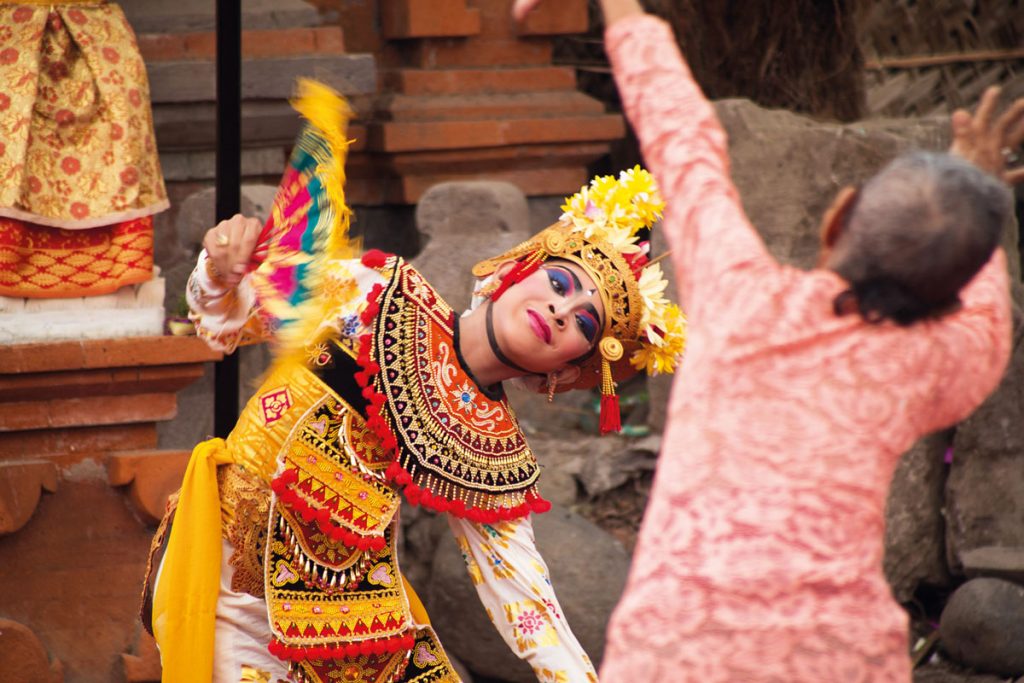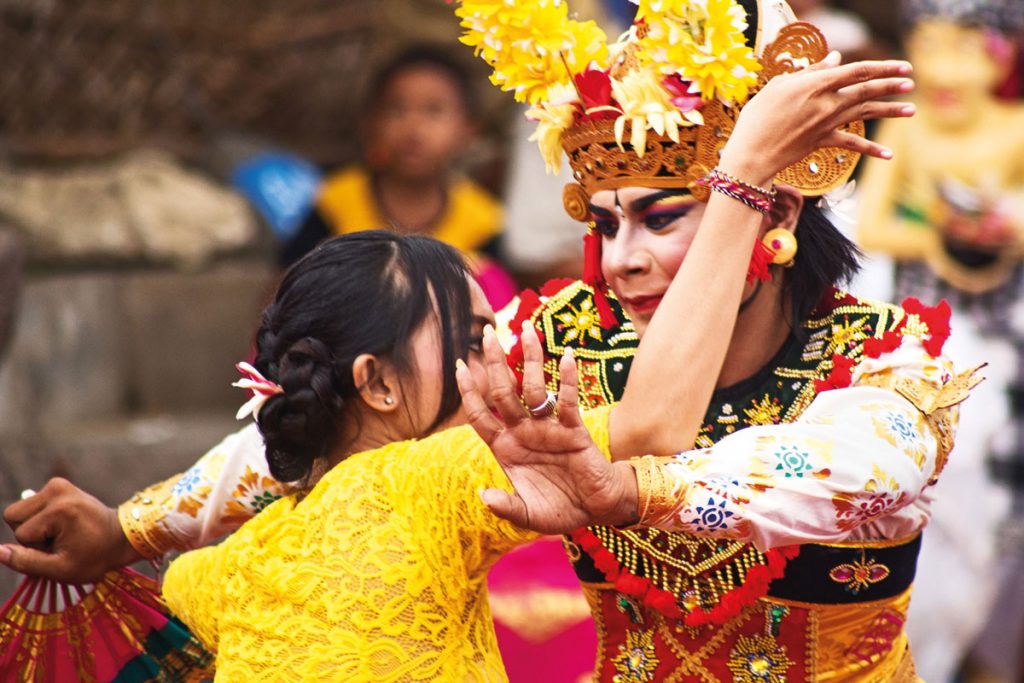Bali is an island with numerous traditional dances, these are categorised into the sacred, classic and contemporary. Classic and contemporary style dances can be found throughout the island, performed on the commercial stage they are truly beautiful spectacles to enjoy. However, sacred dances are rarely for the general public and are reserved for religious ceremonies, one such sacred dance is the ‘Gandrung’.

The ‘base’ routines of most Balinese dances take root from these sacred dances, which came about spontaneously, yet naturally, when dancers entered a state of trance. Other routines were then developed, often inspired by nature or created to tell a specific story through this moving art form. Sadly, despite their strong history, the sacred dances of Bali are slowly fading away as new, exciting choreographies come into popularity.
Now the Gandrung is a special dance, I had known of this dance for a long time but never had the opportunity to watch it as it is only ever performed on special religious occasions in particular temples on the island. The dance also exists in East Java, where it began, where it moved over to Bali and then eventually to Lombok as well, however the Gandrung is different in each region.
The name of the dance is derived from ‘gegandrungan’, meaning ‘being in love’. The Bali version of this dance is performed by male dancers; through soft, supple and feminine movements, these male dances take on the role of a woman during their performance.
There is magic on stage during this performance, and not only in a descriptive sense. The Gandrung is an interactive piece, whereby a member of the audience, man or woman, is invited to dance along side the dancer – this type of dance is called ngibing. The magic lies in the ability of the dancer to enchant this ‘stage guest’, like a snake charmer controlling the movements of a cobra the dancer is able to keep the guest enthralled and involved. Together, performer and audience, dance as if they are ‘in love’.
On the last day of the 2016 Bali Art Festival, the Gandrung Ambek Suci of Majapahit Temple Monang Maning was brought to stage. The Majapahit Temple, found on Imam Bonjol Road in Denpasar, often has the Gandrung performed during its piodalan ceremony, a celebration dedicated to each particular temple. The dance was brought to the commercial stage in an effort to revive the sacred art form, sparking interest in these historical performances so that they are not forgotten. The leader of the dance troupe, Made Yudana, explained that the Gandrung performed on stage is stripped of its sacred attributes, such as a special headpiece that can only be used at the temple.
I went backstage before the performance; the male dancers were getting ready, faces polished with make-up, bodies wrapped in fabric not unlike the female dancers of the Legong dance. Their replica headpieces were kept neatly inside a box before – they prayed together at a shrine before putting them on and going on stage.

One dancer came on stage accompanied by a Hindu priest carrying offerings. The dancer covered his face with a hand fan and sat on a stool while the priest started the offering ceremony. Once the ceremony was done, the gerantang bamboo musical ensemble started playing as accompaniment. The solo dancer slowly uncovered his face and started to dance. The flow and motion of his body was without ‘form’, seemingly random and spontaneous. His body was flexible, bending his upper body, forwards and back.
Suddenly, an elderly lady from the audience walked to the stage and started dancing. She chased the dancer as if he was a long lost lover, before falling to the ground, shouting incoherently. She was in trance.
In what was truly a surreal series of events, more members of the audience took their turn on stage. Another lady came on stage and danced close, in near embrace; a man, enchanted by what his mind thought was a beautiful woman, caught the dancer and also had an intimate dance. More and more, women and men were lured on stage by the dancer and without fail each eventually fell to the ground, screaming wildly in trance.
There were three Gandrung dancers that performed that day, two of which fell into a deep trance once the music stopped. Those who fell into a trance were taken back stage and given holy water by the priest.
As one can imagine, I was stunned and left speechless at my seat. It was for the first time ever had seen almost all performers enter a trance. It was only then I realised why there were so many festival crewmembers standing by, and why a priest was required during this special spectacle.
When the performance was over, I rushed backstage to see Made Yudana for an explanation. He told me, “Gandrung Ambek Suci of the Majapahit Temple Monang Maning must be danced by unmarried male dancers. It is believed that to be a Gandrung dancer you are summoned by God for this role, as a ‘chosen one’. These God-picked dancers must have taksu, spiritual power combined with great technique, to be able to charm the audience throughout the whole performance. Together with the gerantang musical ensemble, whose repetitive rhythms and sounds can send the mind deep into a ‘new dimension’, the Gandrung dancer is able to send people into a magical trance.”






